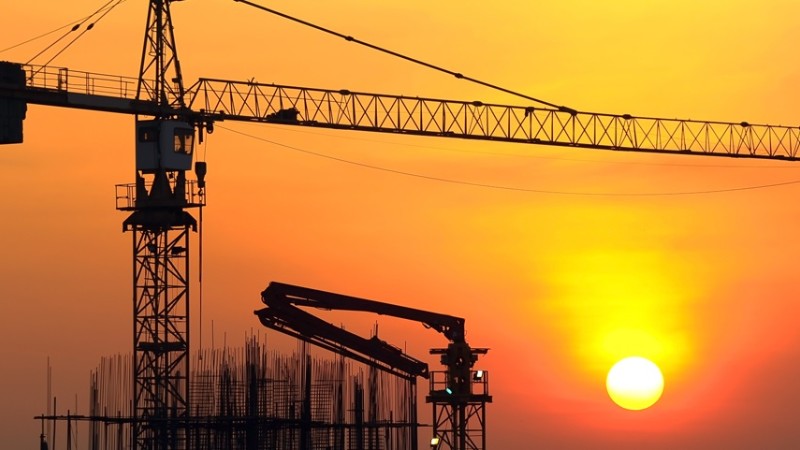60 seconds with…Jemma Quin, Temporary Works Forum

Jemma Quin of the Temporary Works Forum shares key considerations and best practices for lifting projects.
Read on to learn more ahead of its presentation at Crane Safety 2022.
Please briefly explain your role, involvement and experience in crane safety.
Jemma Quin (JQ): I am a licensed civil engineer with over 15 years of construction experience. I have acted as a temporary works coordinator on a number of projects and have planned crane lifts and coordinated ground support checks, work platform designs or mat designs. crane. I am also a Designated Person for Cranes and review lifting plans in my role as Temporary Works Advisor at Kier Ltd.
Temporary works are my passion and I volunteer as director of the Temporary Works Forum (TWf) – a specialist knowledge society of the Institution of Civil Engineers. My/our goal is to make the industry safer by raising awareness of temporary works issues and providing guidance materials and presentations. Last year I identified that there was an issue with some teams at the Kier site not being able to identify stabilizer mats for use with the cranes at the site. I participated in a New Civil Engineer (NCE) lifting roundtable and identified that there is an industry-wide knowledge gap on how to choose stabilizer mats for cranes. So, I decided to do something about it. I used my contacts at the meeting and those of the TWf to create a working group to look into the issue, identify knowledge gaps within the industry and produce a guidance document for fill these gaps. It is being revised and will be ready for publication in the next few weeks (hopefully in time for the seminar).
What are the main challenges the industry is currently facing?
JQ: Have the right people – Ensuring we have the right people with the skills, knowledge and experience to design, plan and deliver lifts.
Understand the ground – some lifts are in places where there has not been a ground survey available, so assumptions are made about the ground the cranes are sitting on.
There is a discrepancy on how some mattress suppliers calculate the capacity of their mattresses (evaluating only compressive strength) and how temporary works designers check mattresses (calculate how the mattress will flex and interact with the floor). This can lead to differences of opinion on capacity figures as they are derived differently. The Temporary Works Forum has produced a guide to help all parties calculate carpet capacity in a standard way to make choosing the right carpet layout quicker and easier.
What are your best tips for taking on a new lifting challenge?
JQ: Have a competent person help you plan the lift, assess ground conditions, and design appropriate outrigger supports such as work platforms or crane mats.
What are your top tips for daily lifts?
JQ: Review the soil conditions you work with at your site or work area. Then, if you use cranes or Hiabs in that area, you only need to do a one-time assessment to see what the effective bearing capacity of the ground is.
Which developments in the crane industry, be it technology or techniques, are you most interested in for the future and why?
JQ: Reusable crane mats are interesting. In theory they could be more durable as you can reuse them and it reduces the amount of stone you need for a working platform. Currently, carpet suppliers calculate their rated capacity differently than how a designer of temporary works would rate carpet laid on the floor. The Temporary Works Forum (TWf) has produced an interesting guidance document TW22.023 Outrigger load assessment and management, which outlines a method for mast suppliers and designers to use to check equipment for the same way. Hence, reducing misunderstandings and having a clear set of criteria that will help people choose the right size rug more easily.
Why is it important for engineers to attend this year’s Crane Safety Seminar?
JQ: There is a clear line of responsibility between the PA (who is responsible for the crane and the lifting activity) and the TWC/design engineer (who is responsible for the ground/what the crane sits on). I have some experience where these people have different opinions on how to assess which mat or work platform is needed for each crane lifting activity. This can lead to confrontations on site or sometimes to the implementation of a bad solution because of a misunderstanding. So by having engineers here, we can discuss how to bridge the gap between the two parties and provide a common path for all parties.
Also, engineers are the ones who design and install the things that need to be lifted by cranes and Hiabs, so they need to know their capabilities. This will allow them to design, plan and implement solutions more efficiently.
Crane Safety 2022 will take place on September 13 in London
Join us at the institution’s headquarters in London in September to tackle the key challenges of carrying out crane operations safely. Presentations will cover recent lifting projects across a wide variety of projects and industries, as well as technical information and industry best practices for reducing the risk of incidents, maintaining standards compliance and getting the most new and innovative technologies: full details and registration at www .imeche.org/cranesafety2022.





